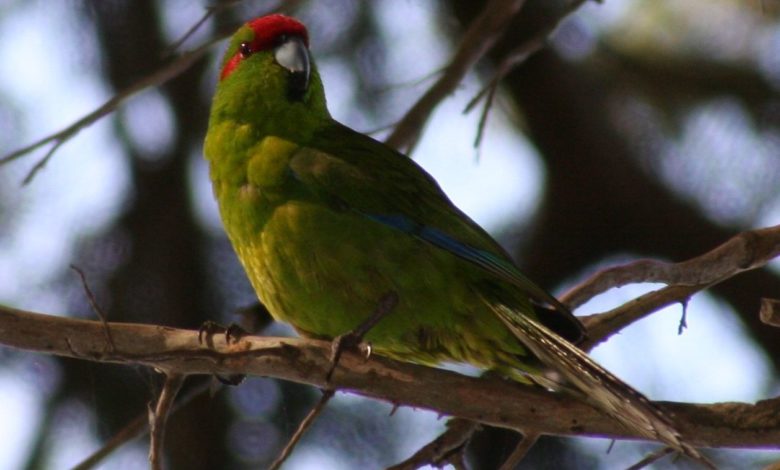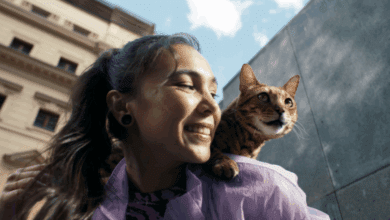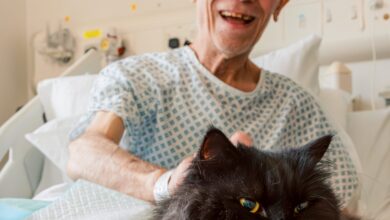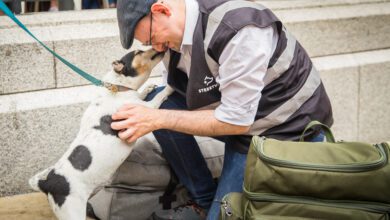Avian: Kakarikis as pets and aviary birds

Register to get 1 free article
Reveal the article below by registering for our email newsletter.
Want unlimited access? View Plans
Already have an account? Sign in
During this series we have been looking at some of the species of cage and aviary birds that are available to us to keep, breed and trade. The good news is that the UK bird trade is going through a welcome revival with sales of birds and the required accessories increasing monthly. The numbers of and choice of species available is also increasing as more and more enter the fancy and breed at home. It is quite an exciting time.
It is important therefore for us as traders and keepers to understand the many species available to us, and that we are able to both care for these species and pass on the required information to the new keeper in order for that bird or birds to go to thrive in their news homes.
As previously stated, the English have had a long love affair with bird keeping with many of these people keeping parrots or parrot like birds. We only have to look at the vast numbers of budgerigars kept and sold over the past century to see that.
There are so many parrots and parrot-like birds available that it can all become quite confusing. Over the past few months we have looked at the smaller species, being Budgerigars, Lovebirds, Parrotlets and the Lineolated Parakeet. In this issue I want to look at a bird that is a little bit bigger but that retains the charm and low noise of the smaller birds. This is a delightful pet and it is called the Kakariki.
NATIVE NEW ZEALANDER
The Kakariki is a medium sized Parakeet that originated originally from the islands of New Zealand. A country that actually has very few parrot-like birds in comparison to Australia. The wild type bird is a vibrant green with a red cap and eye stripes for the red capped species and green with a yellow cap for the yellow fronted, these each occur on different islands. The name Kakariki is taken from the original Maori which means ‘little parrot’.
This is a larger bird that has a sleek long tail. The total length of the bird on average is around 10-12” and appears healthily rotund. The bird has been kept and bred in captivity for a very long time and with the lack of any wild collected imports over many generations from New Zealand it can now be viewed as being only available as truly captive bred. There are numerous colour mutations available at all times, mainly based on the lutino line and variations thereof.
Of course, and as usual, emerging new colour mutations can command high prices making them very desirable. Kakarikis have a large following around the world with some dedicated societies concentrating on their care and propagation.
The wild birds are very much under threat in their native land where deforestation and invasive predators have left only a few hundred birds. There does seem to be good news coming through now as the ‘Department of Conservation’ works to remove the predators and manage the forests seems to be enabling the birds to recover. As always this is a knife edge situation.
Quite the reverse can be said for captive numbers where they are increasing all of the time. This is a bird that is big, bold, friendly and easy to breed. As such they are available all year and for a relatively low price. No animal should be valued by price alone however, in terms of pet value they really do have it all!
DAY TO DAY CARE
The Kakariki can be kept in protected outdoor aviaries and indoor flights. They can also be housed in suitably large cages in the home as a pet bird. This is a species that like to scratch, dig and forage. They will typically dig and scratch around the floor and in the food pots, spreading the seeds and fruits far and wide so that they can pick out those that they require at that time. They are comical waddlers and fly very well. The need to fly in this species must be factored into their long-term care. Caged birds should be given access outside of the cage on a regular basis in order to stretch their wings in a safe and secure environment.
Kakarikis will both bathe in water dishes or baths and they will preen under rain or spray and it is important to feather health that they do. These birds will spend time preening, ensuring that the feathers are in good order and ready for flight. It is in these times that you will be able to easily see the coloration under the wings.
They should be fed a good quality diet of seeds both dried and sprouted alongside bird safe fresh fruits, a small amount of green foods and pulses. Grits and cuttlefish will need to be supplied at all times as will the standard iodine block. This is a bird thats wild ancestor spent long periods in direct sunshine, as always, we as forward thinking keepers learn from the wild variant in order to supply correctly for our captive charges. Good quality avian vitamins, direct unfiltered sunshine and or a specialist UVB emitting bird lamp is required all year.
The Kakariki is not a bird that ‘plays’ in the way that a Budgerigar or a larger Parrot will but they do chew. As such safe chew toys are essential alongside the cuttlefish. Natural and ergonomic perching should be supplied at all stages of the cage.
In terms of caging you should select a medium sized parrot cage that has an opening top or whole panel front door. This will allow the bird plenty of space to climb and be able to leave and re-enter the cage under supervised exercise and interaction times.
They can be kept together and are not known to be aggressive. They can be kept with other smaller safe species such as diamond doves and some finches in mixed aviaries.
BONDING
The Kakariki is a not a talker, but when kept alone they will bond with a human keeper and become quite loving. The Kakariki is the perfect bird for someone that wants a friendly, quiet bird or for the beginner as they work their way up to the larger parrot. They can live for 12-15 years or more, becoming a real part of the family. They are not commonly hand reared as yet but young birds will tame down quickly if the keeper puts some time in each day.
You should be able to retail a single bird for under £60.00 with hand reared birds when available being roughly three times the value.







